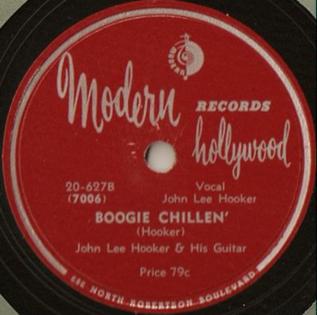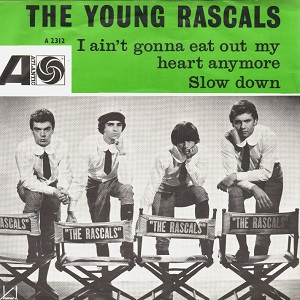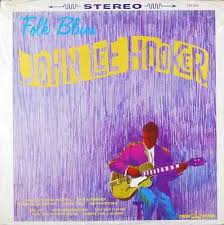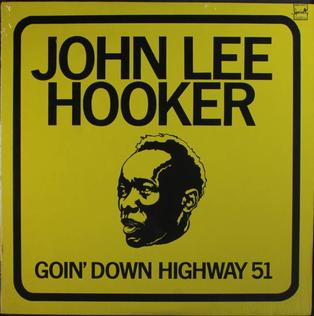
John Lee Hooker was an American blues singer, songwriter, and guitarist. The son of a sharecropper, he rose to prominence performing an electric guitar-style adaptation of Delta blues that he developed in Detroit. Hooker often incorporated other elements, including talking blues and early North Mississippi hill country blues. He developed his own driving-rhythm boogie style, distinct from the 1930s–1940s piano-derived boogie-woogie. Hooker was ranked 35 in Rolling Stone's 2015 list of 100 greatest guitarists, and has been cited as one of the greatest male blues vocalists of all time.

Bonnie Lynn Raitt is an American singer, guitarist, and songwriter. In 1971, Raitt released her self-titled debut album. Following this, she released a series of critically acclaimed roots-influenced albums that incorporated elements of blues, rock, folk, and country. She was also a frequent session player and collaborator with other artists, including Warren Zevon, Little Feat, Jackson Browne, the Pointer Sisters, John Prine, and Leon Russell.

"Boogie Chillen'" or "Boogie Chillun" is a blues song first recorded by John Lee Hooker in 1948. It is a solo performance featuring Hooker's vocal, electric guitar, and rhythmic foot stomps. The lyrics are partly autobiographical and alternate between spoken and sung verses. The song was his debut record release and in 1949, it became the first "down-home" electric blues song to reach number one in the R&B records chart.

"On the Road Again" is a song recorded by the American blues rock group Canned Heat in 1967. A driving blues rock boogie, it was adapted from earlier blues songs and includes mid-1960s psychedelic rock elements. Unlike most of Canned Heat's songs from the period which were sung by Bob Hite, second guitarist and harmonica player Alan Wilson provides the distinctive high pitched vocal, sometimes described as a falsetto.

Screamin' and Hollerin' the Blues: The Worlds of Charley Patton is a boxed set collecting remastered versions of the recorded works of blues singer Charley Patton, with recordings by many of his associates, supplementary interviews and historical data. The set won three Grammy awards, for Best Historical Album, Best Boxed or Special Limited Edition Package, and Best Album Notes.

The Healer is a blues album by John Lee Hooker, released in 1989 by Chameleon. The album features collaborations with Bonnie Raitt, Charlie Musselwhite, Los Lobos and Carlos Santana, among others. The album was a critical and commercial success and was important for Hooker's later career.
The Bihari brothers, Lester, Jules, Saul and Joe, were American businessmen of Hungarian Jewish origins. They were the founders of Modern Records in Los Angeles and its subsidiaries, such as Meteor Records, based in Memphis. The Bihari brothers were significant figures in the process that transformed rhythm and blues into rock and roll, which appealed to white audiences in the 1950s.

Come See About Me: The Definitive DVD is a 2004 film featuring concert performances by American blues artist John Lee Hooker. The program was produced by Ravin' Films for Eagle Rock Entertainment and was directed and edited by Bob Sarles and produced by Christina Keating. It is the first video released by his estate and includes video footage from 1960 to 1994 and interviews with Hooker and other musicians. Allmusic called it "a tremendous primer for the novice [and] an extraordinary two-hours-plus of documentary footage for the fans".

"Dimples" is a song written and recorded by blues singer-songwriter John Lee Hooker in 1956. It is an ensemble piece, with Hooker accompanied by Jimmy Reed's backup band. Eight years after its first release, it became Hooker's first record to appear in the British record charts. Called a "genuine Hooker classic" by music critic Bill Dahl, it is one of his best-known songs, with interpretations by several artists.

Eddie Kirkland was an American electric blues guitarist, harmonicist, singer, and songwriter.

James "Hutch" Hutchinson is an American session bassist best known for his work with Bonnie Raitt. Though his work takes him nearly everywhere he primarily resides in Studio City, Los Angeles, California, and Haiku-Pauwela, Hawaii.

"I Ain't Gonna Eat Out My Heart Anymore" is a song written by Pam Sawyer and Laurie Burton in 1965. Originally envisioned to be recorded by a British Invasion artist, the song was extremely well liked by the American rock group the Young Rascals, and they subsequently recorded the song and released it as their debut single in November 1965 through Atlantic Records. Though only a marginal hit, reaching number 52 on the Billboard Hot 100, it largely established the band on the American music scene. It has since been included on several albums by the band, including their eponymous debut album, and several compilation albums, including Time Peace: The Rascals' Greatest Hits, on which it was the opening track.
Tony Braunagel is an American drummer, producer, and songwriter from Houston, Texas, United States, who is based in Los Angeles, California. Braunagel has played on many film scores and television shows as well as numerous albums as a musician, composer and producer. He is best known as a session drummer and/or percussionist of over 200 albums including those of Otis Rush, Eric Burdon, Johnny Nash, Coco Montoya, Lucky Peterson, as well as Grammy winning albums of Bonnie Raitt, Taj Mahal, Buddy Guy (percussion) and for performing live with dozens of music icons including Bonnie Raitt, Rickie Lee Jones, BB King, Lightnin’ Hopkins, John Lee Hooker, Robert Cray, Bette Midler, Lyle Lovett, and Taj Mahal to name just a few.

Live at Sugar Hill is a live album by blues musician John Lee Hooker recorded in the Sugar Hill club in California in 1962 and released by the Galaxy label. The album was reissued in 1974 by Fantasy as the first disc of the double LP Boogie Chillun which added ten additional previously unreleased recordings from the same concerts.

Don't Turn Me from Your Door, subtitled John Lee Hooker Sings His Blues, is an album by the blues musician John Lee Hooker, compiling six songs originally recorded for De Luxe Records in 1953 along with six new tunes recorded in 1961. Atco Records released the album in 1963.

Folk Blues is an album by blues musician John Lee Hooker, compiling tracks originally recorded for Modern Records between 1951 and 1954, that was released by the Crown label in 1962.

Goin' Down Highway 51 is an album by blues musician John Lee Hooker, compiling tracks originally recorded for Bernie Besman between 1948 and 1951, that was released by the Specialty label in 1971.

Howling Wolf Sings the Blues is a compilation album by blues musician Howlin' Wolf, which was released by Crown Records in 1962. The original album included eight songs recorded for Modern Records between 1951 and 1952, including those tracks that were released as singles by the RPM, and an additional two instrumentals by Joe Hill Louis. The album was re-released in 1970 by United Records with the alternative title Big City Blues.
Bernard Besman was an American record producer and distributor who established Sensation Records, an early independent record label in Detroit, Michigan. He was the first to record John Lee Hooker, and is officially credited with co-writing some of Hooker's songs.
"I Ain't Gonna Let You Break My Heart Again" is a song by American blues musician Bonnie Raitt from her Nick of Time album. It was written by David Lasley and Julie Lasley. Raitt sings the song accompanied by Herbie Hancock, playing solo piano. It was produced by Don Was, engineered and mixed by Ed Cherney.
















